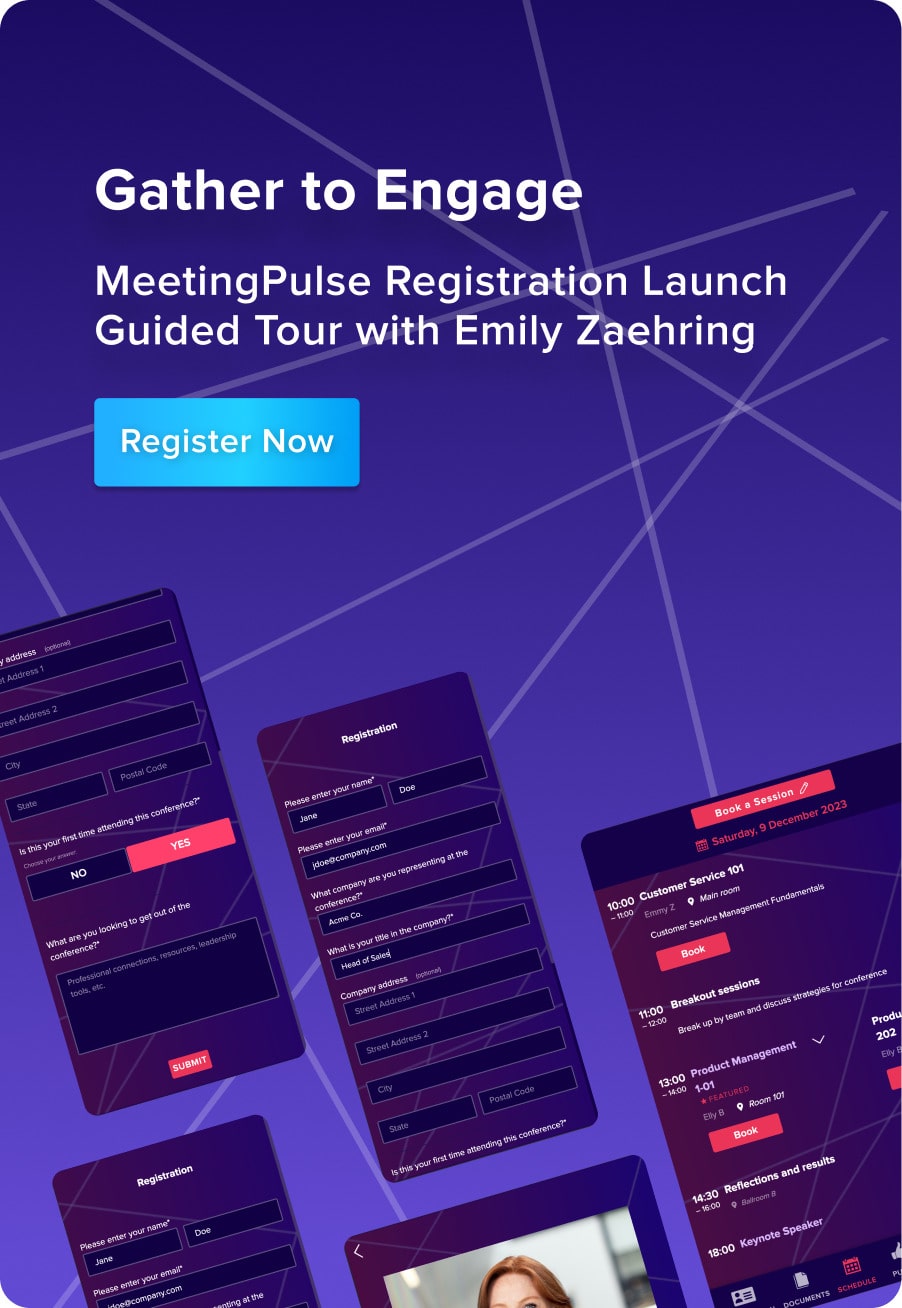Meetings and presentations in the workplace can be pretty rigid, right? Not only do you have the responsibility to make sure the meeting is engaging, but you also need to effectively convey the required information to everyone in the room with a certain degree of professionalism. Striking a balance between these two goals can seem tough.
The more conversations and interactions a presentation initiates, the more fun and informative it can be. In order to make that happen, icebreakers are key. They can work absolute wonders by helping everyone there feel more comfortable and connect with one another.
Icebreakers remove the awkwardness, allow people to relax, boost audience energy, develop a friendly atmosphere, and encourage networking. Let’s take a look at some fun icebreakers that can be utilized in different situations.
What’s An Icebreaker And What Can it Do?
An icebreaker means to breaks the “ice” or coldness around your attendees. In a room (physical or virtual) full of people who may or may not know one another, the atmosphere can be cold. If you plunge into your presentation in that environment, it won’t go over as well as it could. Attendees who feel out of place won’t interact or engage. Take the time to “warm-up” the room.
There are several advantages to beginning with an icebreaker:
- They help people to relax and have fun. Relaxation allows people to learn and entertain new ideas. An icebreaker is especially useful if you plan to get audience participation at some point in your presentation.
- Icebreakers are energizers. It’s great to start the meeting with one, but also throughout the session, if you notice your audience is looking tired, restless, or down at their phones more often than necessary – pull out a lively icebreaker.
- Icebreakers provide networking opportunities. Your audience can discover what they have in common.
- Finally, icebreakers create a positive atmosphere. If you want your presentation to be remembered for all the right reasons, begin with a happy, comfortable audience.
Here are a few tips that will make your icebreakers work
- Know your audience. Not every icebreaker suits every audience. Be careful not to offend or embarrass anyone.
- Try to include everyone, but again, don’t offend or embarrass your audience.
- Keep your objective in mind. The icebreakers you choose should help you reach your objectives, not just make your audience laugh.
- Make sure everyone is having fun. It’s not an icebreaker if it results in people feeling uncomfortable.
- Finally, avoid calling it an icebreaker. Unfortunately, the term has become associated with an unpleasant experience. So if you announce that you’re doing an icebreaker, you’re likely to be met with groans and resistance. Instead, say, “I have an idea; let’s try something new!”

Icebreakers for One-On-One Sessions
Try these for one-on-one presentations:
Introduce yourself
This is obvious, but introduce yourself unless you already know one another. If you know one another, maybe you can share a fact about yourself that the other person might not know.
Have a conversation
Have a quick chat about current affairs, the weather, or family. Whatever interests both of you and creates a warm environment.
Ask open-ended questions
While you chat, use open-ended questions. These will allow you to know your prospect better.
Ask what they expect from the presentation
As you talk with your prospect, figure out what they expect to gain from the presentation. If their expectations are incorrect, you can correct them. And you can adjust your presentation, if necessary.
Give them a present
Present them with a small token of appreciation, just for showing up to your presentation. No doubt you’ve been stood-up before, so a thank you gift is appropriate.
Compliment them
There’s a lot of power in a genuine compliment. Be kind to your prospect and notice something to compliment-worthy. Now let’s take a look at some fun icebreakers that can be utilized in different situations.
Related: 35 Funny Poll Questions to Engage Your Audience and Brighten Someone’s Day
Icebreakers for Small Groups
If you’re looking for some fun icebreaking ideas among small groups, here’s a place to start:
Two Truths and a Lie
Two Truths and a Lie can be an extremely fun game. The idea is that each and every member makes three statements about themselves. Two are true and the other is a lie. Players will then guess which ones are the truths and which one is the lie. The statements could be as simple as “I’ve gone skydiving in Spain,” “I owned a turtle as a kid,” and “I have never had sushi.”

Most Unique
Most Unique, too, helps everyone in a small group loosen up before a meeting or a presentation. It takes less time than the previous game, but similarly aims to help coworkers learn fun facts about each other.
The idea is simple: every person in the room gets to state something about themselves that’s unique and makes them different from the rest. For example, “I have ten siblings‚” “I can speak five languages‚” “I have lived in six different countries till date‚” and so on.
Get-to-Know-You Questions
This is one of the simplest ice breakers. Each group member can ask the other some questions that will help them get to know each other better. Examples of great questions to ask include:
- What do you enjoy doing on the weekend?
- Do you own any pets?
- What is your favorite holiday destination?
- What are your pet peeves?
- What are your future goals?
And so on.
Would You Rather
Would You Rather is a game that initiates discussions on perspectives and individual personalities. It helps your team members learn a little more about each other. Every person is given a choice between two scenarios, and they have to pick one. After making a choice, they also have to explain why they picked that option.
The choices could be something like:
- Would you rather have summer or winter your whole life?
- Would you rather prepare your meal yourself and have different options each day or have your meal prepared for you without getting to choose the dish?
- Would you rather watch a new movie every day or re-watch your favorites without getting to watch anything new again?
And so on. The questions might seem silly, but you’d be surprised about what you can learn about your colleagues’ unique perspectives.

Going on a Picnic
If you’re giving a presentation to people who don’t know each other that well, this is a great way to get group members to learn each other’s names in a fun way.
For example, if your name is Pauline, you will state your name, say you’re going on a picnic, and then say you’re bringing an item that starts with the first letter of your name. So, the sentence will be, “My name is Pauline, I am going on a picnic, and I’m bringing popcorn.”
The next person has to state not only what they’re bringing, but what the person before them is bringing as well. It’s basically a memory game and a name game combined.
Related: 20 Interactive Presentation Games
Icebreakers for Large Groups
If your group is slightly bigger and has more members, there are even more options for icebreakers. Here are some interesting ones to opt for.
Scavenger Hunt
Remember the scavenger hunts your school made you participate in? Remember how it helped bring out your positively competitive side while you and your team members came together to win the game? The idea is the same here, with office members engaging in developing their problem-solving skills and working together towards a common goal.
You can divide the members in about 4-5 groups, and have the clues take them from one place to another. Try keeping fun prizes as well for the team or teams that perform the best.

Marshmallow Challenge
Dividing everyone into groups of about four to five members, give every group a long piece of string, 20 sticks of dry spaghetti, some tape, and a marshmallow. The aim is to see which group can use the given elements to build the strongest structure with the marshmallow on top. This allows everyone to collaborate and pitch in ideas to execute the plan.
Celebrity Heads
For this game, there are about six members in every group. Two players are required for every round, where one member will have the picture of a celebrity stuck on their forehead. They will ask “yes or no” questions about the celebrity until they can guess who it is.
M&M’s Exchange
Give every member the same amount of M&Ms. Have everyone say one thing that they haven’t done that they think the others might have. Anyone who has done that thing needs to give the speaker an M&M, and if there’s someone who hasn’t done it, the person who made the statement gives that person an M&M. The game goes on till someone runs out of M&Ms.
True or False Running
Yet another fun icebreaker for large groups is the True or False Running game. Draw a line in the middle of the room, with the right side being the true side and the left side being the false side. Make statements related to general knowledge, and have members hop on either side depending on whether the statement is true or false. The one who gets the most correct answers wins.
Related: How to Get People to Take a Survey
Ice Breakers for Training Seminars
Those attending training seminars are often nervous about the whole process. In order to make the attendees more comfortable, these are some great icebreaker sessions to choose from.

Blind Drawing
This game requires two members to pair up. They need to be made to sit back-to-back, with one person having a picture, and the other person having a pen and a paper. The person holding the picture needs to describe it to the other individual, and the latter needs to draw it. The duo with the best picture can be given a small prize as a token of appreciation. Image source: https://www.flaticon.com/authors/freepik
Five of Anything
Divide the members of the training seminar into groups of four or five. Each group gets a topic, such as a book or a movie or so, and every member needs to list their five favorite things under that topic. After that, everyone gets to discuss their answers and learn a little more about the people around them.
10 Things in Common
This game can help members find common traits with one another. Pair up two people and let them list 10 things that they have in common. It could be something as simple as them both having three siblings or owning a dog, and so on.
One Word
For One Word, divide the members into groups and give each of them a discussion topic. Using this topic, they all have to come up with a word that they think will best describe the subject. For example, if it’s about company culture, ask them the one word they think best describes it. This facilitates interesting discussions among everyone.
Related: How to Moderate Panel Discussion
Icebreakers for Team Building
The main aim of most icebreakers is to create a spirit of team effort and team bonding. If that’s what you’re looking to build before a meeting or in any other situation, the following icebreakers can help:
Whodunit
Whodunit works well with both small and big groups. Have every member write something they have done on a piece of paper, be it scuba diving or going for a solo trip, and put all the notes in a basket. Every member picks a random note, and depending on which one they’ve picked up, they have to guess who it belongs to or which person had that particular experience.

The Egg Drop
This team building icebreaker gets everyone engaged and is super-fun to both witness and perform. Divide the members into groups of about five people, and give each group an uncooked egg.
Have a few office supplies ready in a pile, and using those supplies, each team has to build a contraption around the egg that prevents it from breaking when it’s dropped. Image source: https://www.flaticon.com/authors/freepik
The Barter Puzzle
In this icebreaker game, groups are made and each team is given a puzzle to solve. However, some pieces of every puzzle are mixed with the other groups. Every group then has to decide how to acquire the piece from the other group in order to complete their puzzle.
Human Rock-Paper-Scissors
Who knew this classic game could be turned into an icebreaker method? Well, turns out it can. Break the members into different teams, and have each team come up with unique body signals for rock-paper-scissors. Each team can have a face-off in a best-of-five series, and the team that performs the best wins the game.
A Final Note
Keeping your audience engaged with icebreakers can help set the tone for the rest of the meeting. For more advice on how to make your presentations engaging, and for unique meeting tools visit Meeting Pulse!
You can use our live polling features to make question-and-answer games easier and visually pleasing, and gauge audience engagement with upvotes, downvotes, and emojis. With a slew of great icebreakers and simple, yet innovative tools, you can kick off your meetings right.






